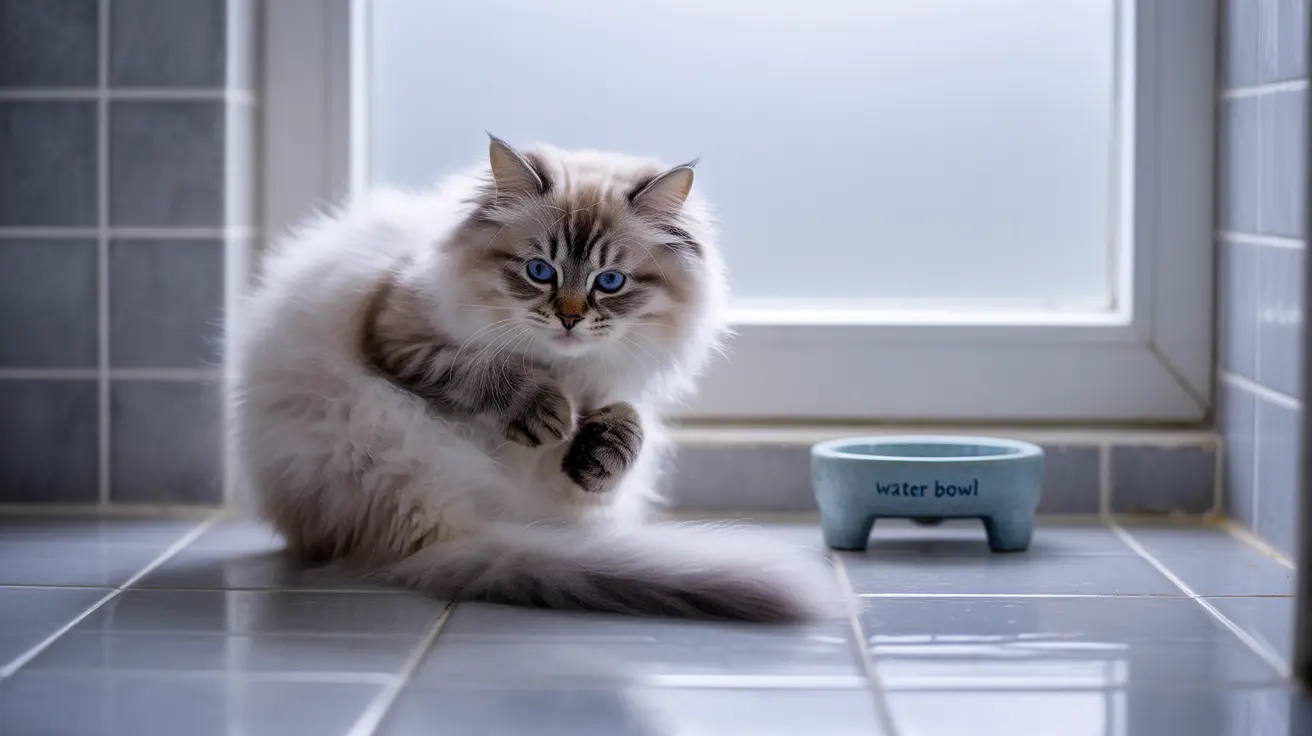If you've noticed your cat showing discomfort around their rear end, you might wonder if cats can get hemorrhoids like humans do. The short answer is no - true hemorrhoids don't occur in cats due to their unique anatomy. However, cats can develop several other anal and rectal conditions that may look similar to hemorrhoids and require proper veterinary care.
Let's explore what's really happening when cats show symptoms that resemble hemorrhoids, and learn about the actual conditions that might be affecting your feline friend.
Why Cats Don't Get Hemorrhoids
Unlike humans, cats have a horizontal gastrointestinal tract that doesn't put the same pressure on their rectal veins. This anatomical difference means that cats don't develop the swollen blood vessels we know as hemorrhoids. However, they can experience various other anal and rectal issues that require attention.
Common Conditions That Mimic Hemorrhoids in Cats
Anal Gland Problems
The most frequent cause of anal discomfort in cats is anal gland disease. These small glands can become impacted, infected, or abscessed, causing swelling and pain around the anus that might be mistaken for hemorrhoids.
Rectal Prolapse
This serious condition occurs when rectal tissue protrudes from the anus, creating a visible bulge that might be confused with hemorrhoids. Rectal prolapse requires immediate veterinary attention.
Signs Your Cat May Have Anal Health Issues
Watch for these warning signs that indicate your cat needs veterinary care:
- Scooting or dragging their bottom
- Excessive licking of the anal area
- Visible swelling or redness around the anus
- Signs of pain when defecating
- Changes in litter box behavior
- Blood in or around stools
Diagnosis and Treatment
Only a veterinarian can properly diagnose the cause of your cat's anal discomfort. The treatment approach will depend on the underlying condition but may include:
- Manual expression of anal glands
- Antibiotics for infections
- Anti-inflammatory medications
- Dietary modifications
- Surgery in severe cases
Prevention Tips
While you can't prevent all anal health issues, you can reduce their likelihood by:
- Maintaining a balanced, high-fiber diet
- Ensuring adequate water intake
- Keeping the litter box clean
- Scheduling regular veterinary check-ups
- Monitoring your cat's bathroom habits
Frequently Asked Questions
Can cats actually get hemorrhoids, or are anal and rectal symptoms in cats caused by other conditions?
Cats do not get true hemorrhoids. What appears to be hemorrhoids in cats is actually caused by other conditions such as anal gland disease, rectal prolapse, or inflammation.
What are the most common signs that my cat might have anal gland disease or a similar anal health problem?
Common signs include scooting on the floor, excessive licking of the anal area, visible swelling or redness around the anus, and signs of discomfort during defecation.
How do veterinarians diagnose and treat anal gland issues or rectal prolapse that look like hemorrhoids in cats?
Veterinarians perform physical examinations, including rectal exams, and may conduct additional tests like imaging or laboratory work. Treatment varies based on the specific condition but may include manual expression of anal glands, medications, or surgery.
What home care or dietary changes can help prevent anal gland problems and anal irritation in cats?
Maintaining a high-fiber diet, ensuring adequate hydration, keeping the litter box clean, and monitoring your cat's bathroom habits can help prevent anal health issues.
When should I seek veterinary attention if my cat is scooting, licking excessively, or showing redness and swelling near the anus?
Seek veterinary care promptly if you notice any of these symptoms, especially if they persist for more than a day or are accompanied by other signs of distress. Early intervention often leads to better outcomes.
Remember, while cats don't get hemorrhoids, any anal or rectal symptoms should be taken seriously and evaluated by a veterinarian to ensure proper diagnosis and treatment of the underlying condition.






